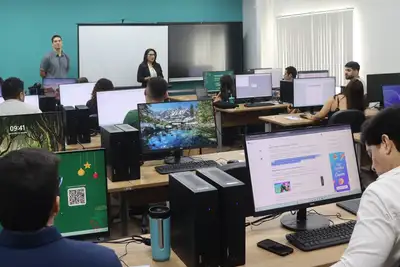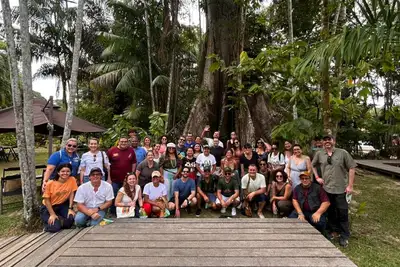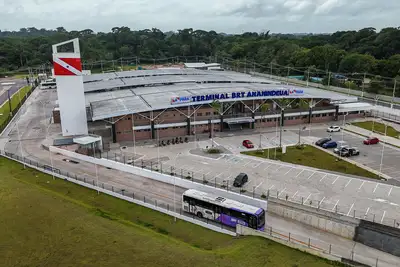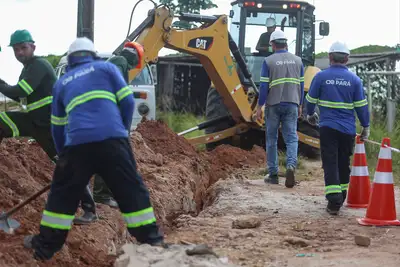Pará shows the world, at COP30, how giant trees and protected areas strengthen the climate agenda in the Amazon
At the Pará Pavilion in the Green Zone, experts discussed forest protection, ecotourism, and the impact of monumental trees on regional and global climate
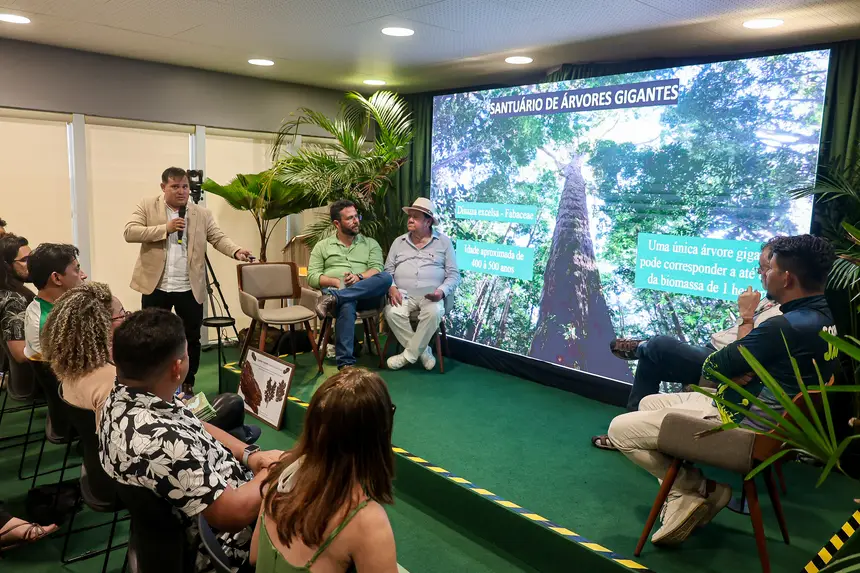
The Pará Pavilion, in the Green Zone of COP30, hosted, on this Tuesday (18), the panel "Protected Areas in the State of Pará and the Giant Trees in the Climate Balance of the Amazon," promoted by the Institute of Forest Development and Biodiversity (Ideflor-Bio), of the government of Pará. The meeting brought together experts, public managers, researchers, and community representatives to discuss the strategic importance of conservation units and the role of giant trees in the climate regulation of the region.
The panel included the director of Biodiversity Management at Ideflor-Bio, Crisomar Lobato; the director of the Federal Institute of Amapá (IFAP) - Laranjal do Jari Campus, Diego Armando; the manager of Climate and Conservation Public Policies at the Sustainable Amazon Foundation (FAS), Gabriela Sampaio; the manager of the Administrative Region of Belém at Ideflor-Bio, Júlio Meyer; and the representative of Coopertu Jari, Márcio André.
During the event, Ideflor-Bio officially launched the catalog of State Conservation Units and the box containing the executive version and three technical-scientific studies that supported the creation of the State Park of the Giant Trees of the Amazon. The material was prepared by the team of the Biodiversity Management Directorate (DGBio), with full support from the Sustainable Amazon Foundation (FAS) and the Andes Amazon Fund (AAF), which ensured financial and logistical support for the expeditions and research necessary for the establishment of the 29th State Conservation Unit.
Largest tree in Latin America
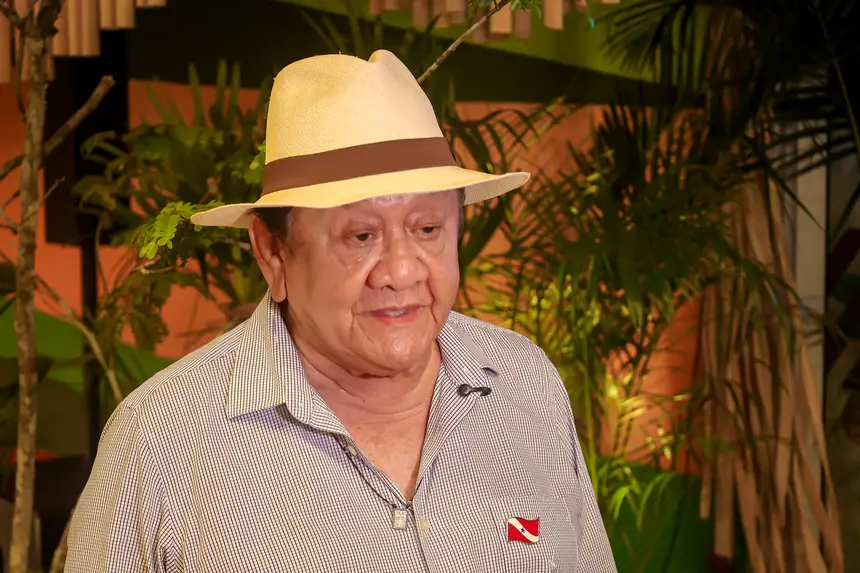
When presenting the set of studies, Crisomar Lobato highlighted the scientific impact of the discovery of giant trees in Northern Pará, identified from research by the National Institute for Space Research (Inpe). He recalled that among them is the largest tree in Brazil and Latin America - a red angelim measuring 88.5 meters in height.
“The relevance of such a tree for biodiversity and ecosystem balance is enormous. Just the evapotranspiration from a canopy of this size significantly contributes to the so-called flying rivers, which ensure rainfall even in the Southeast and Midwest of the country. Therefore, preserving these giants is essential,” he emphasized. Crisomar also explained that upon identifying that the area was a state forest aimed at management, Ideflor-Bio chose to designate it for full protection, culminating in the creation of the Environmental State Park of the Giant Trees of the Amazon, covering 560,000 hectares.
The manager of FAS, Gabriela Sampaio, emphasized that presenting these results at COP30 reinforces the role of the Amazon in the global climate debate. For her, the panel highlights how cooperation between government, science, civil society organizations, and traditional communities is essential to ensure concrete advances. “The Amazon already produces real, scalable, and evidence-based solutions. When we show the creation and consolidation of Conservation Units and territorial management models with community leadership, we affirm to the world that protecting the forest is possible when there is coordination, political will, and continuous investment,” she highlighted.
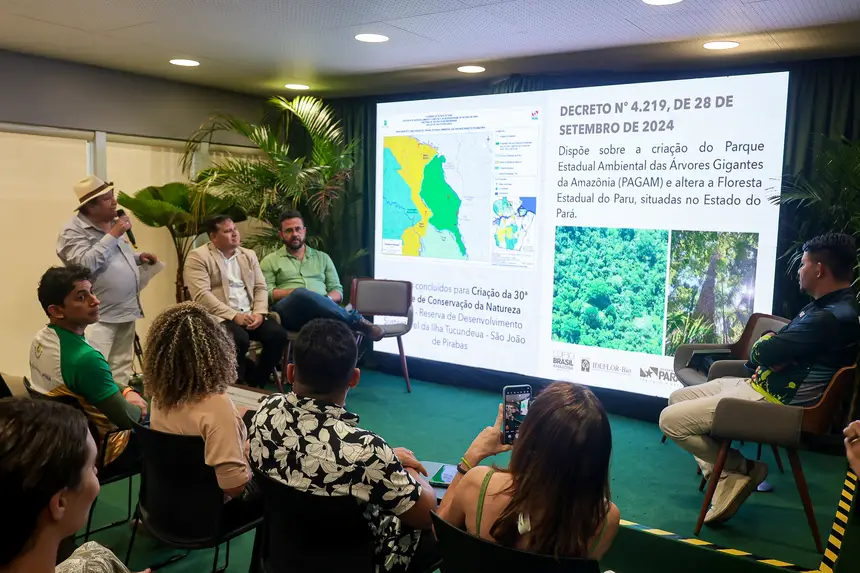
Strengthening ecotourism
Representing territorial management and tourism planning, Júlio Meyer emphasized that the panel was also an opportunity to present Ideflor-Bio's work in strengthening ecotourism in Pará, especially in the State Park of the Giant Trees. He explained that the team has been structuring a tourism product capable of ensuring visitor access, enhancing the experience of contemplation and environmental education.
“Tourism is an essential strategy for generating income and valuing the unit. Participating in this panel alongside funders and the community of RDS Iratapuru demonstrates how Pará, Amapá, and local communities are aligned to develop a high-level itinerary for the Park,” he stated.
The representative of Coopertu Jari, Marcio André, reinforced the importance of community inclusion in the implementation process of the new Conservation Unit. For him, the participation of the local population, especially the traditional communities living near the protected area, is decisive to ensure proper management, sustainable use, and the creation of economic opportunities based on nature tourism and environmental conservation.
Research for forest preservation
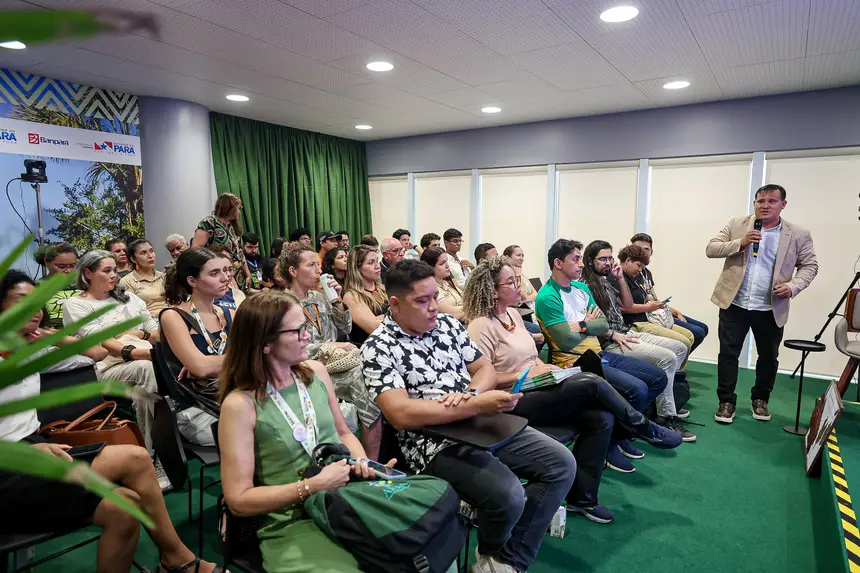
Meanwhile, the director of IFAP - Laranjal do Jari Campus, Diego Armando, stressed that the presence of the institution at the panel reinforces the commitment of public education to scientific research and sustainable development in the ecological corridor connecting Pará and Amapá. According to him, training young researchers and technicians capable of working in conservation areas is one of the Institute's priorities, which maintains ongoing partnerships with environmental organizations and extractive communities in the region.
The panel concluded with a reaffirmation of the joint commitment of the participants to strengthen environmental governance in the Amazon. The president of Ideflor-Bio, Nilson Pinto, stated that the launch of the studies and the catalog represents a historic milestone in valuing Pará's Conservation Units and in consolidating public policies aimed at protecting ecosystems essential to global climate balance.
“As highlighted by the debaters, the creation of the State Park of the Giant Trees symbolizes not only the preservation of monumental trees but the advancement of an agenda that seeks to reconcile conservation, development, and climate justice,” concluded the president.


